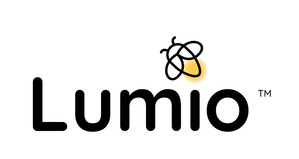New Analysis Finds Technology Infrastructure Leads Key Areas of Technology Readiness in Schools
Results from two years of educators completing the research-based EdTech Assessment Tool fielded by SMART Technologies find a 10X tie between positive teacher and student outcomes and high levels of technology planning and implementation
CALGARY, AB, April 22, 2021 /PRNewswire/ -- SMART Technologies, the edtech leader with a 30-year track record of pioneering learning solutions that encourage student collaboration and engagement, has released an analysis based on assessments completed by nearly 1,300 educators. The results show educators who report the highest level of technology capabilities were ten times more likely to observe high teaching and learning outcomes in their schools.
The newly confirmed tie between good preparation and good outcomes is especially important since a recent RAND Corporation study found one in five school districts expect to offer virtual learning after the pandemic ends and one in 10, hybrid or blended instruction. This is in part to meet parent and student demand—increasing the need for effective education technology implementation.
The new visual report sums up global research based on the responses of educators (administrators and teachers) who conducted detailed self-assessments over a two-year period with the EdTech Assessment Tool, an in-depth survey underwritten by SMART to benchmark school technology readiness against international standards and best practices. Educators rated their schools on nearly two dozen capabilities required to effectively prepare for or implement learning technologies, and gauged their schools' results on a half-dozen related teaching and learning outcomes.
- Technology infrastructure and management was the most well developed of four general areas of technology readiness, outpacing the other general areas of leadership and engagement, technology integration, and professional development. Technology infrastructure readiness includes the underlying capabilities of network infrastructure, compatibility of learning technologies, technical support and design of learning spaces.
- School teaching goals were said to be met or exceeded by the 91% of educators who also reported the highest level of capability development. By comparison, meeting or exceeding teaching goals was true for only 41% of educators who reported the lowest level of education technology capabilities on a four-level scale.
- Student test scores slightly or greatly improved according to 92% of educators who also reported the highest level of capability development. Conversely, 25% of educators at the lowest of the four levels said student test scores at their schools had slightly or greatly declined.
- The more classroom technology in use, the better the outcomes. Educators observing the highest level of outcomes also reported their schools had more classroom hardware and software in use than low-outcome schools. The biggest differences—with the greatest apparent effect on outcomes—were for lesson creation, assessment and game-based classroom software. The largest percentages of reported use by high-outcome educators were for presentation software (96%), interactive whiteboards and displays (95%), collaborative software (91%), and lesson creation software (90%).
"As schools prepare for a post-pandemic future, it's more clear than ever that education technology is here to stay," said SMART CEO Nicholas Svensson. "It's gratifying to see that schools that intelligently plan for, and then apply, technology to teaching and learning before and during the pandemic also report strong outcomes, which are critically important as students and families adjust to new models of instruction."
Educators who complete the research-based EdTech Assessment Tool receive a custom profile that helps their schools prioritize work and investment for better learning outcomes. In addition to the four areas included in the visual report, the EdTech Assessment Tool recently added blended learning as a fifth general area of readiness. Use of the EdTech Assessment Tool and the custom profile are available to administrators and teachers at no charge.
The new visual report, "EdTech Assessment Tool: Connecting Strong Capabilities with High Outcomes," can be downloaded at www.smarttech.com/profile. An earlier companion report specifically about blended learning, "Remotely Ready: Global Insights into Effective Teaching and Learning in a Pandemic," is available at www.smarttech.com/remotelyready.
About SMART Technologies Inc.
SMART is a world leader in education technology, providing interactive solutions to help every person discover and develop the greatness within them. A consistent innovator for over 30 years, SMART is the inventor of the SMART Board® and the developer of SMART Notebook®, the world's most popular collaborative learning software, and part of the SMART Learning Suite. With their full range of interconnected displays, software, and accessories, used by millions in education and business, SMART helps students, colleagues and teams around the world create connections that matter. To learn more, visit smarttech.com.
SOURCE SMART Technologies

Related Links
WANT YOUR COMPANY'S NEWS FEATURED ON PRNEWSWIRE.COM?
Newsrooms &
Influencers
Digital Media
Outlets
Journalists
Opted In






Share this article